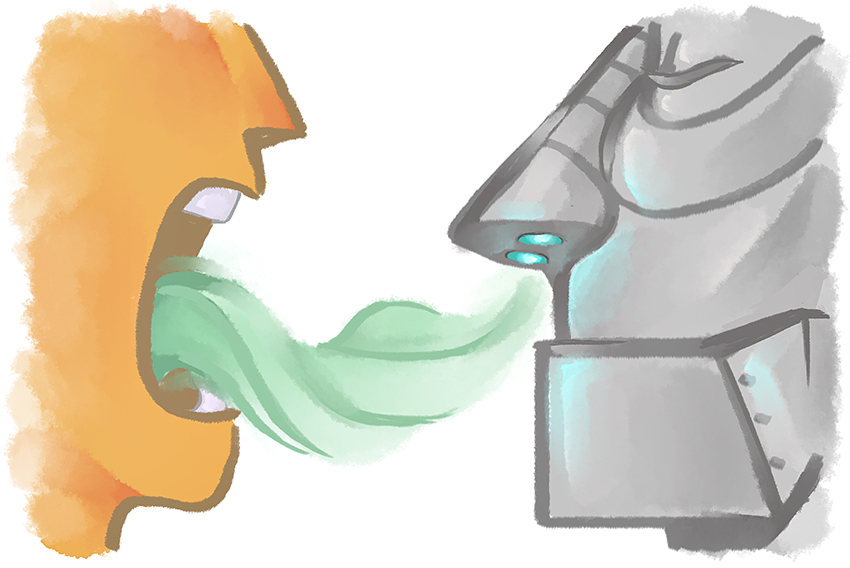A new electronic nose identifies more than just bad breath.
UT Dallas researchers, Dr. Navneet Sharma and Qian Zhong, recently built an electronic nose that uses breath analysis to detect a wide array of health issues. The two have been working on the nose, called a CMOS rotational spectrometer, for roughly five years and are part of a research team working with Ohio State University and Wright State University.
Blood travels throughout every part of your body, and when it exchanges oxygen with carbon dioxide in your lungs, the exhaled breath holds information about bodily functions. Sharma said that this electronic nose analyzes a patient’s breath and can then report their blood sugar levels or relay information about conditions such as asthma, lung cancer or another type of cancer.
Researchers have previously pushed for an electronic nose, but its costliness has hindered research. Sharma and Zhong’s team made the device more affordable by incorporating a type of technology called CMOS, or Complementary Metal Oxide Semiconductor. Sharma said that CMOS technology, or the process of building extremely small circuits, is the backbone of many current computers, cell phones and tablets.
“CMOS technology provides the best integration capability, lowest cost, and highest yield and CMOS chips have been manufactured in large volume for decades,” said Zhong.
Zhong said that the nose detects various gas molecules by employing rotational spectroscopy, which involves observing how each gas molecule absorbs light waves. Then, the device lowers the pressure around the molecule and can tell the user what types of gas molecules are present.
This CMOS rotational spectrometer device also has applications outside of healthcare. Sharma said that the device can be used by law enforcement for measuring someone’s precise alcohol level.
“Current breathalyzers cannot distinguish between acetone and ethanol, leading to wrong measurements and convictions,” Sharma said. “Furthermore, acetone is present in our breath because of food we eat and is strongly present in the breath of people suffering from diabetes, or in those on a keto diet or in those who are fasting.”
Sharma said the nose can be applied in everyday situations too, such as making sure that someone is properly taking medication or checking the ripeness of fruit.
The team wants to improve the device’s ability to modify the pressure around gas molecules and get the nose in beta testing in two years. Zhong said he hopes this electronic nose is not just for healthcare providers.
“We believe the CMOS rotational spectrometer will soon appear in everybody's home as normal monitoring for air quality and personal health,” Zhong said.















